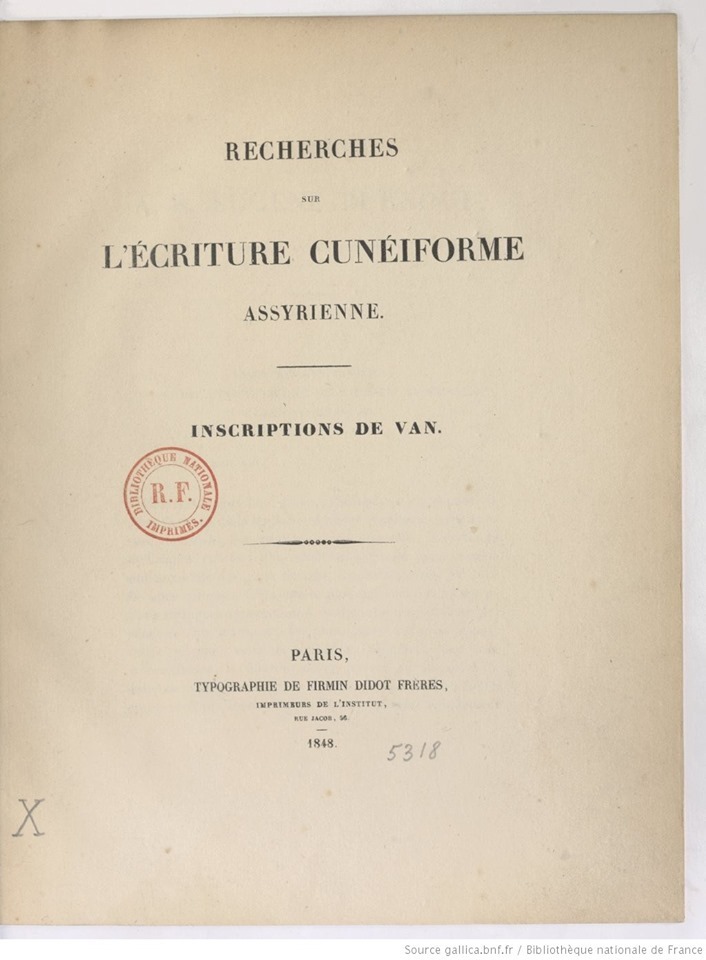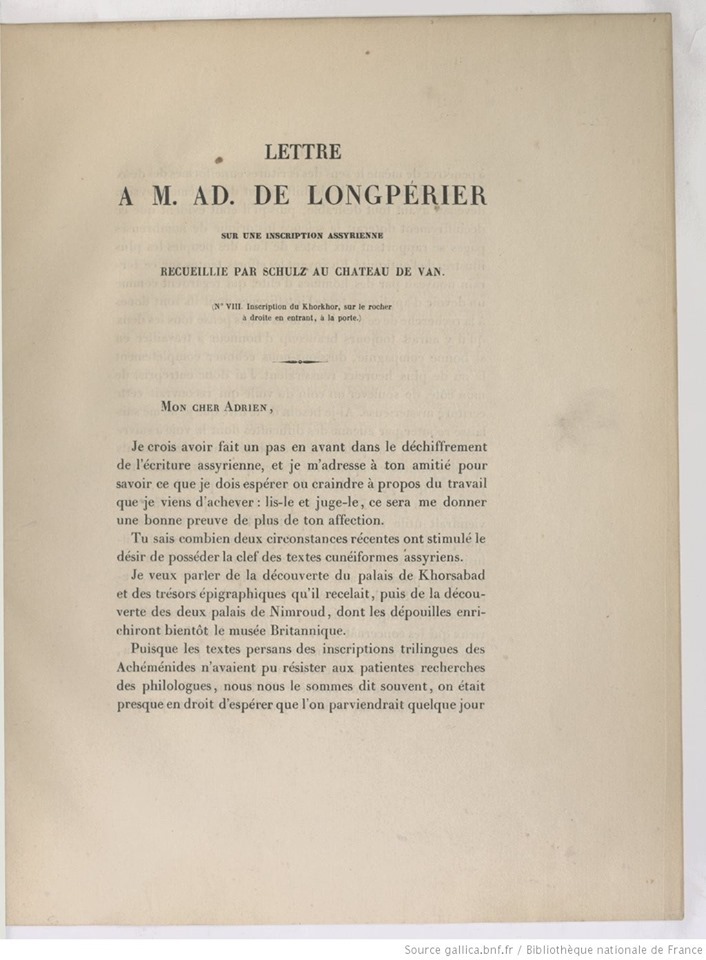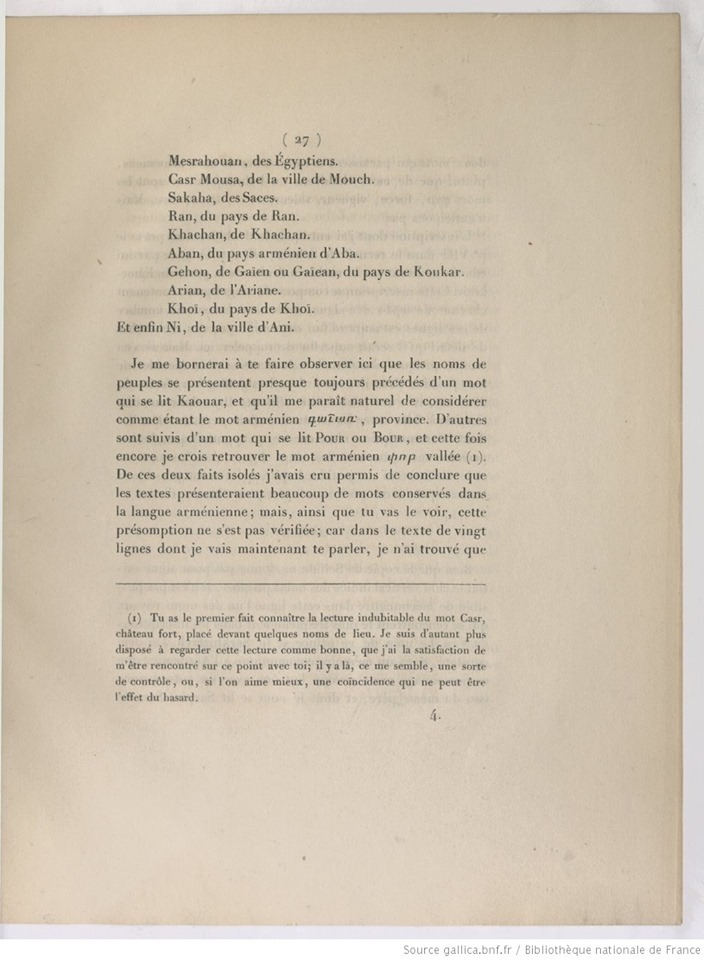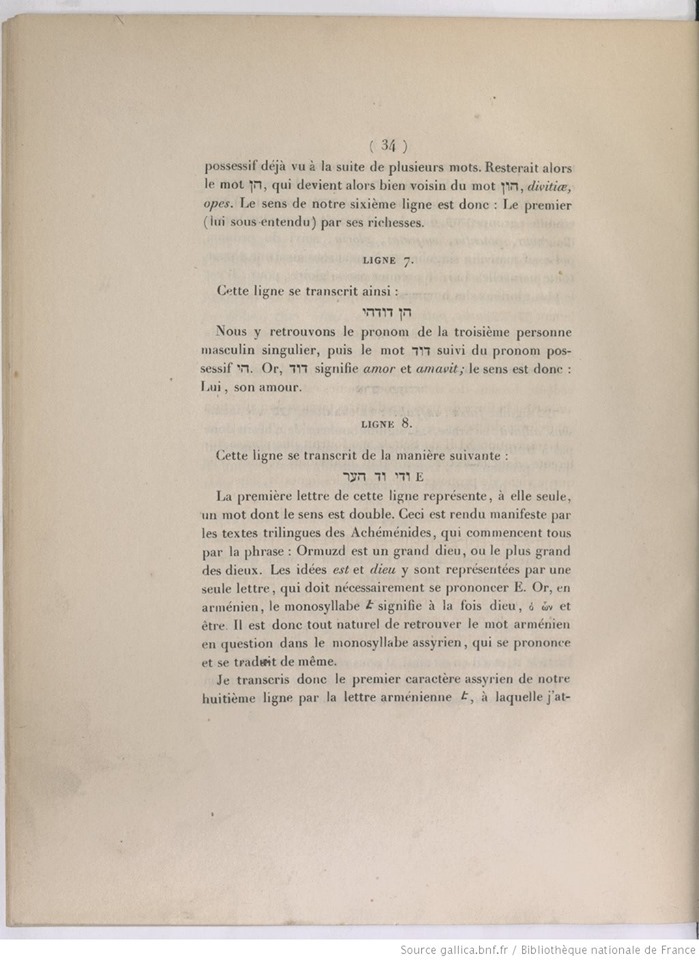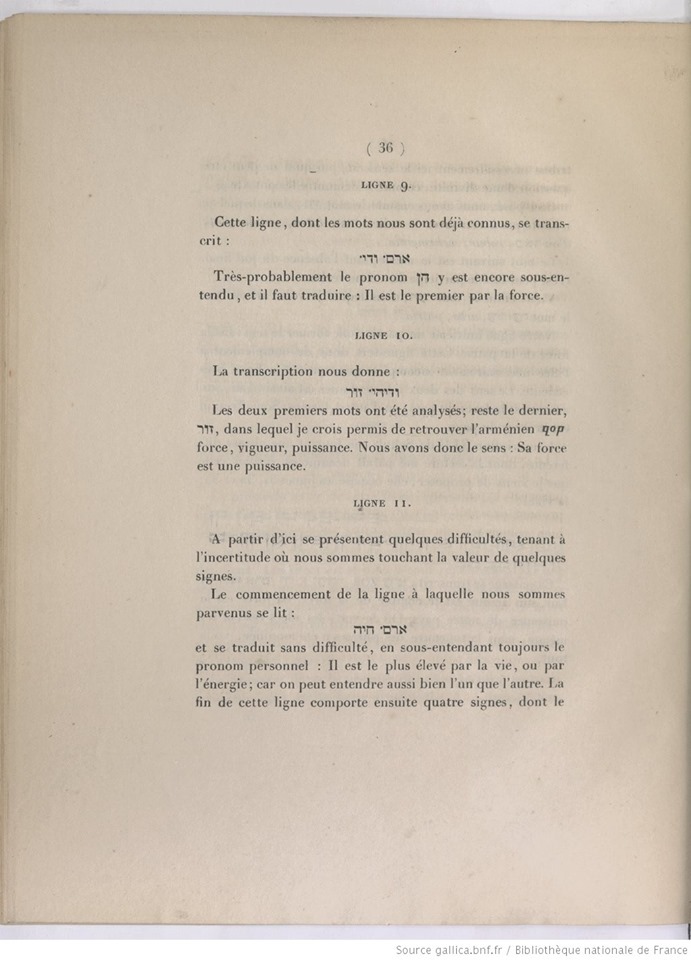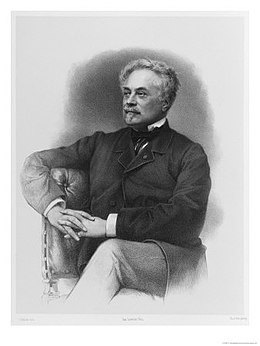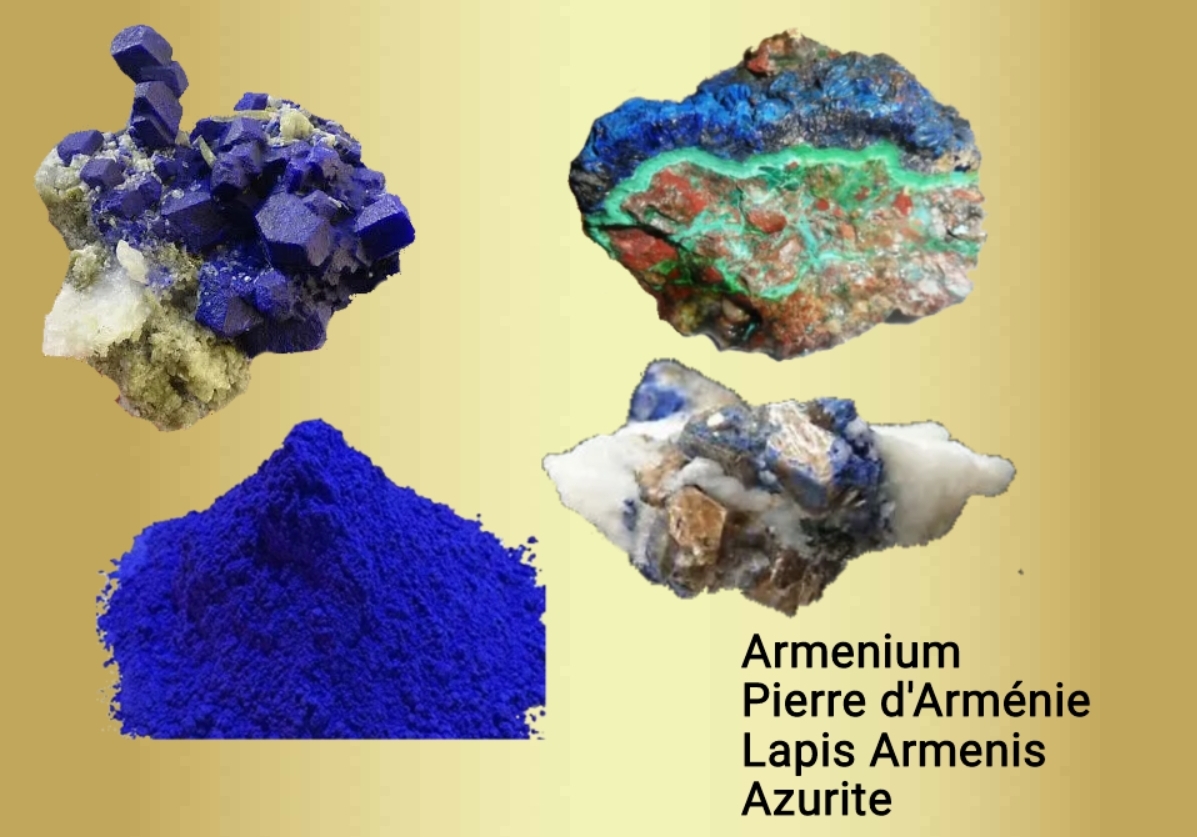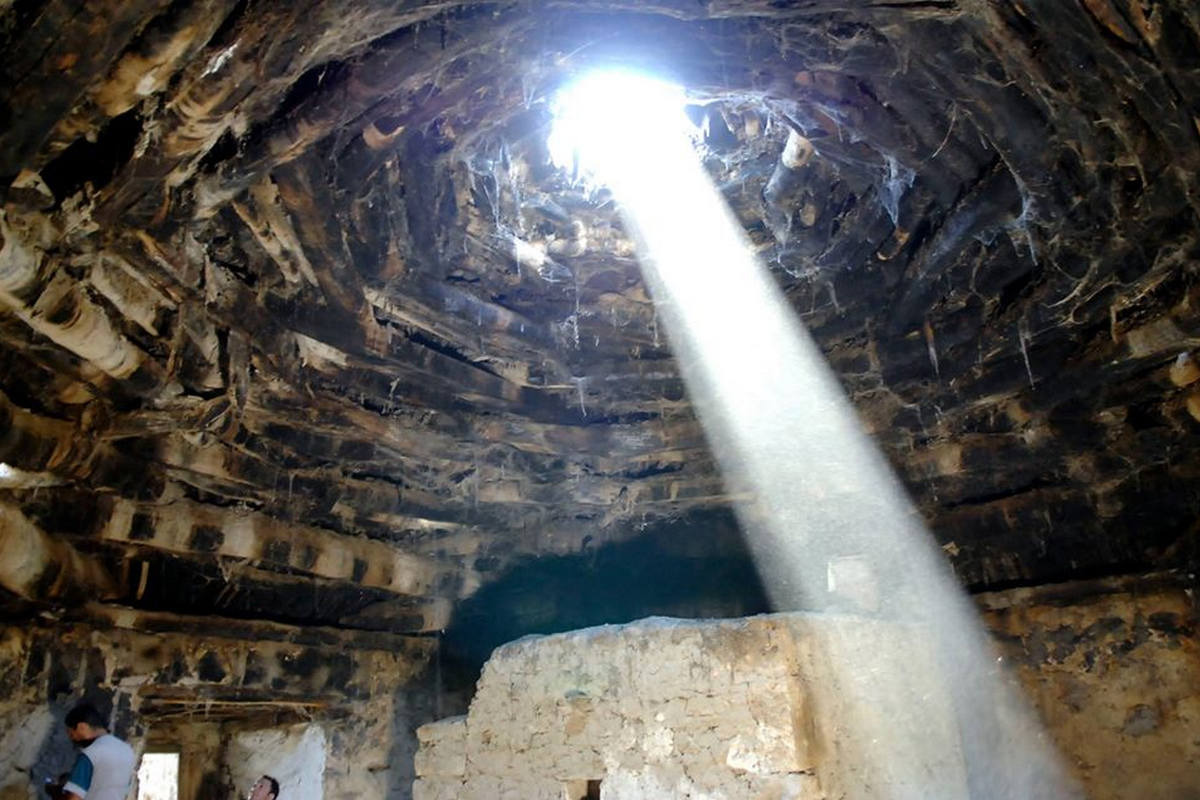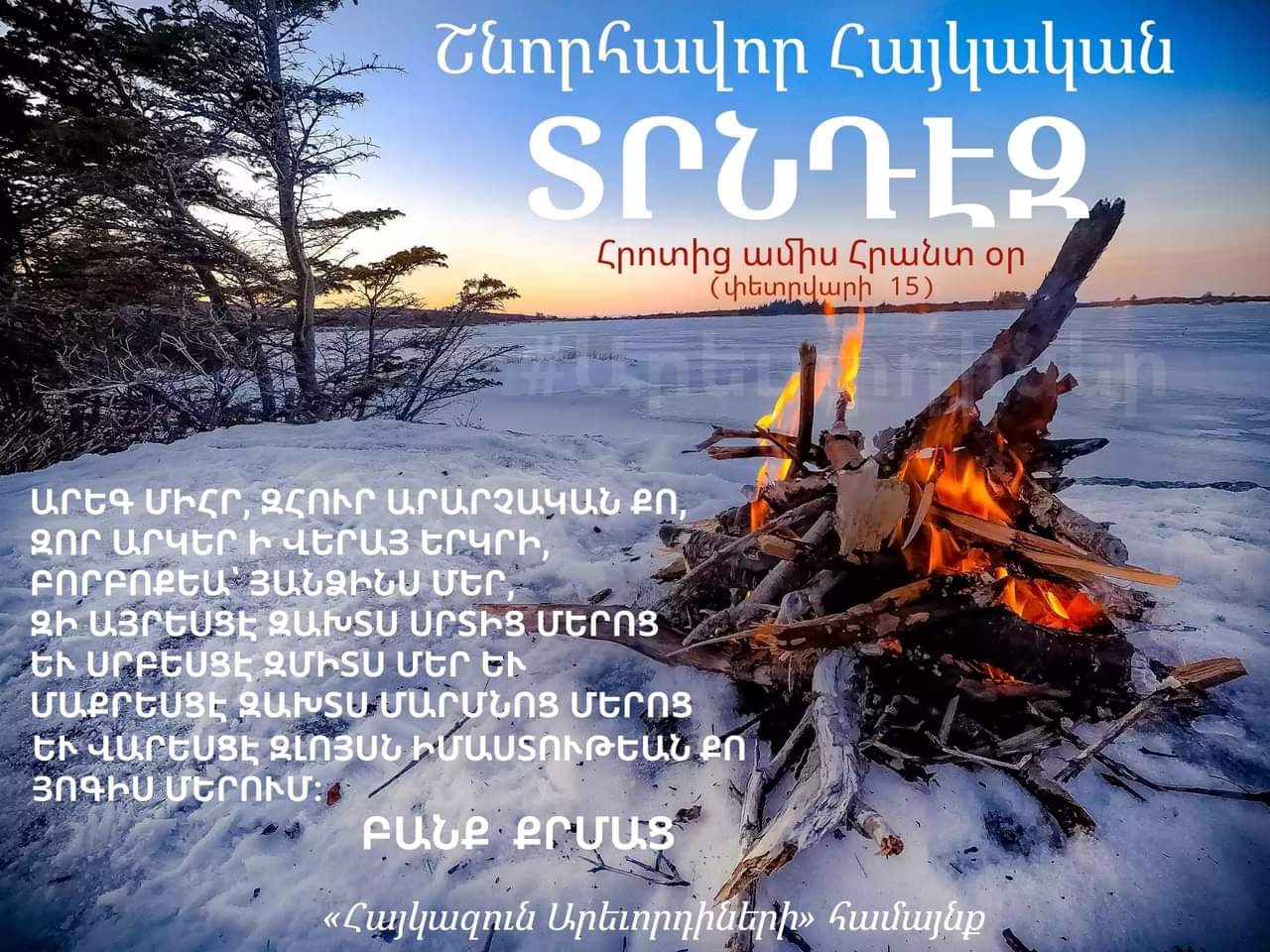‘Long live the king!’ (or more accurately, ‘May the king live long…’) is a popular saying in Armenian.
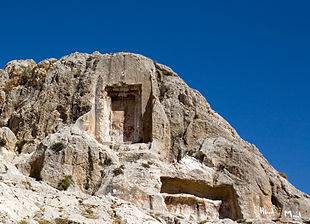
This blessing formula has been accepted and well-known since ancient times.
Enduring through fairy tales, it has reached us.
Aside from fairy tales, similar blessings conclude many inscriptions of the ancient world, one of which holds particular significance for us, not so much for its content but for the letters used.
The intense resurgence of interest in studying the traces of past civilizations among researchers in the 19th century was combined with natural sciences and linguistics.
The study of the rich materials “erupted” from the earth’s depths was further complemented by the deciphering of inscriptions from that time.
The first scientific explorations raised many questions, which, along with their working reports, were presented by the scholars to the Academic Commission.
In 1847, French archaeologist, numismatist, and politician Félicien (Félix) de Saulcy (1807–1880), a member of the Académie des Inscriptions et Belles-Lettres, presented his deciphering of the inscriptions from Van.
Being a museum scholar, senator, and one of the founders of Biblical archaeology, this specialist, who had conducted archaeological excavations, attempted to meticulously, line by line, interpret the writing carved on the rock to the right of the Van Khorkhorian Gate.
Today, what was written with the alphabet used by others as a variant of Aramaic letters, he read without difficulty in Armenian, highlighting the use of the letter “E” both as a divine “Being” and as the singular third-person “is,” as well as the words “Gavar” (Province), “Zor” (Power), “Por” (Plain), and the endings “gn” and “gni.”
The laudatory text with glorious titles concludes with the aforementioned blessing:
“May the king live long” or more precisely, “Long live the king,” “Sun-life to the king” (“May the king have a long and bright life”)… (in later pronunciation, “Long live the king”) (in my own “deciphering” in Armenian)…
Both the Aramaic letters and the other variant derived from them were created by the same script, and logically, not by nomadic tribes (as some try to suggest)…
Interestingly, the “Danielian symbols” obtained from the search for pre-Mashtots scripts are in the same quantity as the aforementioned alphabet (let us recall that vowels were written (added) in Mashtots’ “vision” and, as is known, vowels are also missing in the mentioned alphabet. About the profound Mystery of the seven vowels of the ancient “Seven-script,” I will write in a separate note).
Another unnecessary reason for the eradication of pre-Mashtots literature…
